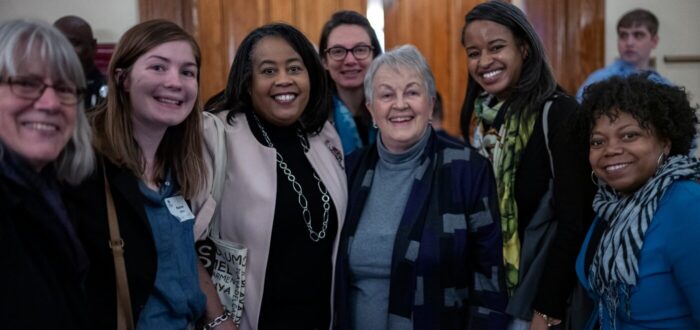
Esteemed national reporters Errin Haines, Justin Worland, and Katie Pyzyk headline Dec. 10 webinar on Covering Climate Equitably, a new guide for journalists created by The Solutions Project
The guide seeks to provide journalists with an up-to-date resource for covering equity and justice issues in climate stories and is endorsed by Solutions Journalism Network
LOS ANGELES — Journalists interested in writing inclusive stories on climate and clean energy have a valuable new resource in Covering Climate Equitably: A Guide for Journalists, released today by The Solutions Project. The guide offers helpful information and practical tips for journalists working in any medium who want to produce climate and clean energy stories that accurately and appropriately feature the views, experiences, and leadership of people of color and low-income communities working on climate change solutions. While the guide’s focus is on climate and clean energy, its overall principles may also be useful to journalists on other beats who seek to incorporate an equity lens.
Reporters and editors helped shape the guide, which is endorsed by the Solutions Journalism Network. A panel discussing issues raised in the guide will be moderated by Errin Haines, co-founder and editor at large at The 19th and an MSNBC contributor. Panelists include TIME senior correspondent Justin Worland, who covers climate change and the intersection of policy, politics, and society, and freelance journalist Katie Pyzyk, who wrote one of the stories featured in the journalist’s guide. The hour-long webinar will start at 1p.m. EST on Thursday, December 10. Journalists and journalism educators and students are invited to attend, and can register here.
A guide designed to help journalists source, report and write climate and clean energy stories that include an equity lens.
“Climate solutions are created and implemented every day in frontline communities. They can inspire all of us across the country to take bold action with solutions that really work for everyone. We produced Covering Climate Equitably in order to equip journalists with a practical guide to telling these stories,” said The Solutions Project’s CEO, Gloria Walton.
The Solutions Project created the guide in the wake of the Renewable Energy Narrative Trends report it released earlier this year. “Our report found that in 2019, only 2% of clean energy news articles referenced communities of color, and only 6% referenced issues related to equity and justice,” said Walton.
The guide identifies common challenges journalists face to telling climate equity stories, from tight deadlines and limited bandwidth, to disparities in climate funding for grassroots groups in communities of color that too often result in a lack of resources to proactively share their stories with the media. It includes suggested approaches to these challenges, and case studies of stories that show these ideas in action.
“We appreciate that The Solutions Project consulted with journalists and editors when producing this guide. It provides an accurate picture of why climate equity hasn’t received significant coverage and how journalists can change that,” said Jules Hotz, communities manager at the Solutions Journalism Network. “The guide truly is a helpful resource for enhancing climate equity coverage.”
The guide consists of three main sections:
One of these grassroots leaders is Tatewin Means, executive director of Thunder Valley Community Development Corporation on the Pine Ridge Reservation in South Dakota.
“During COVID-19, the media has been covering how communities of color have been disproportionately impacted by the virus because of systemic and environmental racism. Our communities are also disproportionately impacted by climate change for the same reasons,” said Means. “I’m hopeful that Covering Climate Equitably will help reporters pull back the curtain on this issue, and help them cover how communities across Turtle Island are implementing solutions,” Means said, using the name many Indigenous peoples call North and Central America.
Media outlets that focus on climate issues see the guide as a useful tool.
“Covering Climate Equitably is a valuable resource for journalists across all media who are committed to covering the climate crisis fully and accurately. As systemic inequities come into full view, the release of this guide is very timely,” said Grist CEO Brady Piñero Walkinshaw.
Reporters can register for the webinar here.
The guide was developed in partnership with Conspire For Good and Provoc.